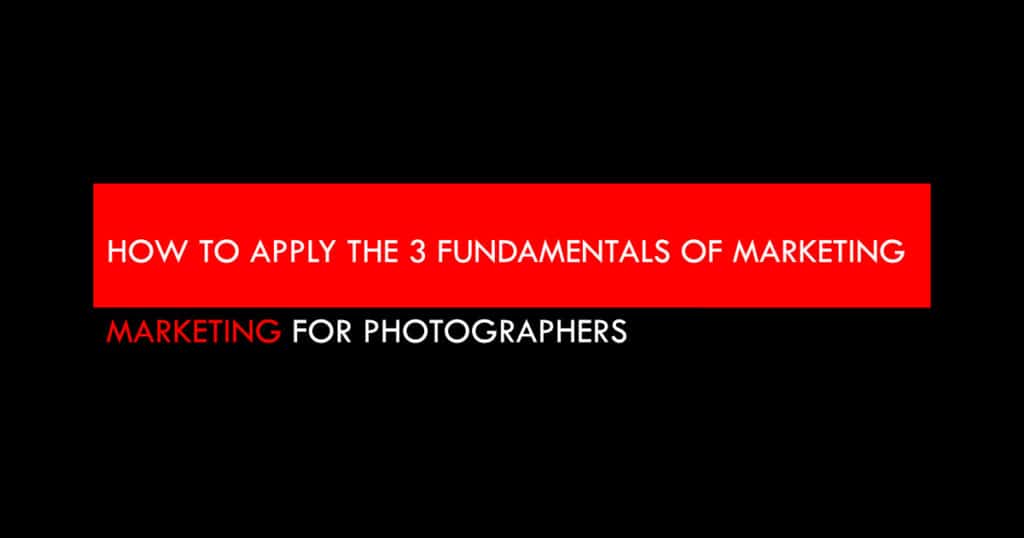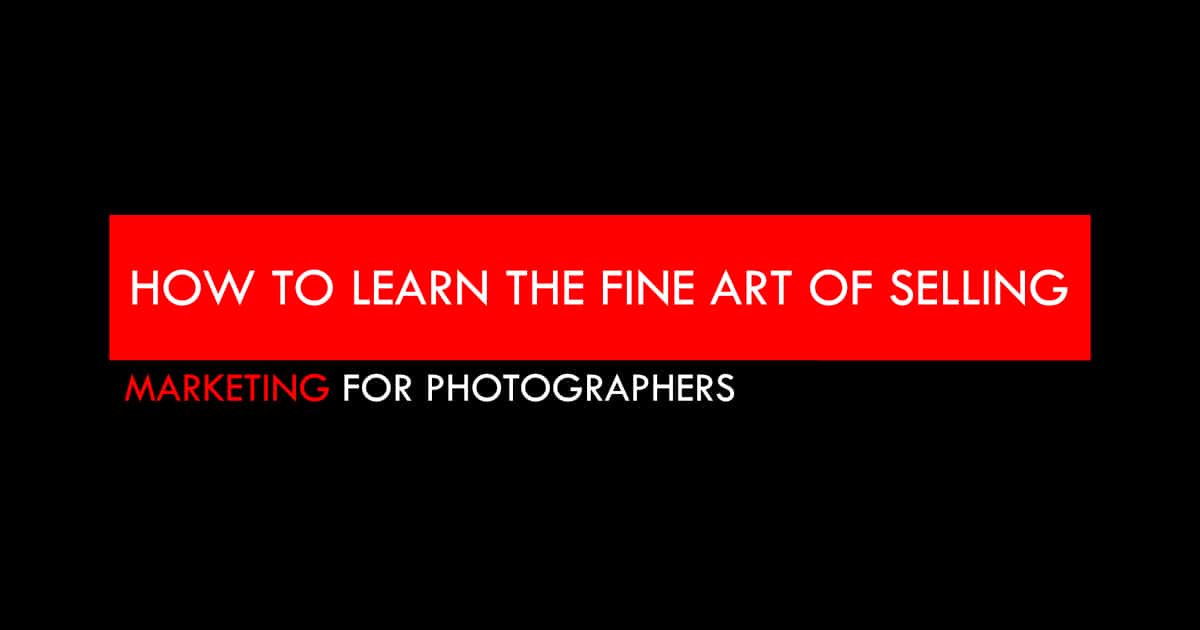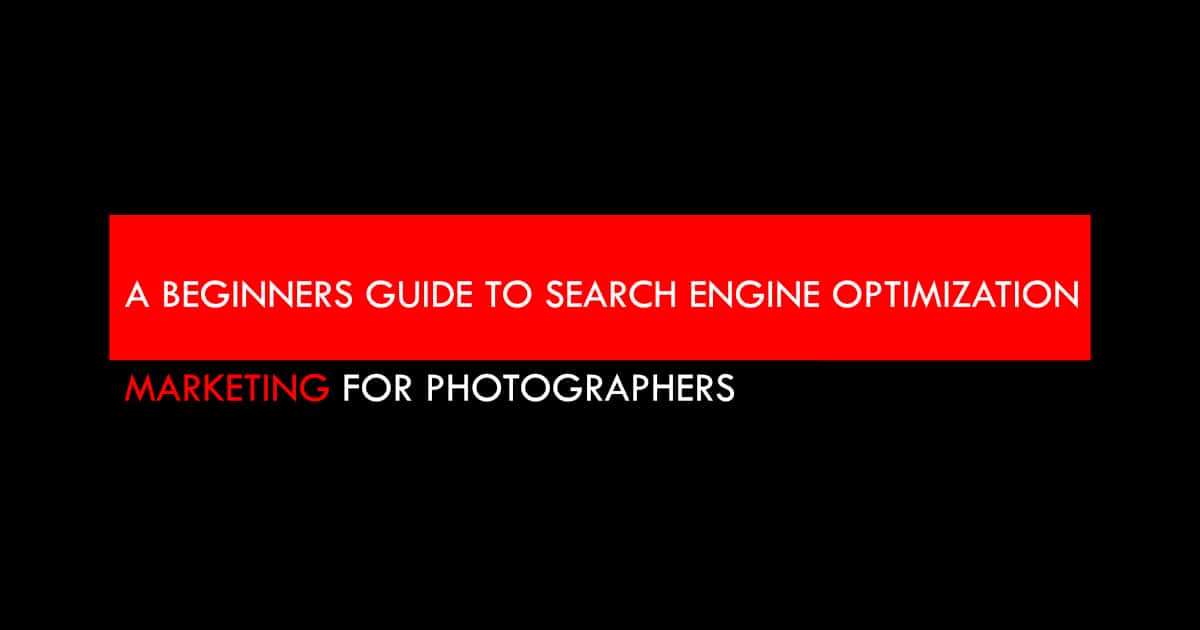In our previous blog post we discussed three principles of marketing that photographers should follow if they want their businesses to be successful. In this article, we will show you where you can actually apply those principle in more places that you think.
What are the Three Principles of Marketing?
- Know your ideal customer
- Define your marketing objective
- Grab your customer’s attention, using the principles of AIDA (Attention, Interest, Desire and Action)
How do we apply these three principles of marketing to our photography business?
Let’s start with our core product, which, is, of course, our photography and we typically will present this to our potential client as a portfolio of work.
Look at the 3 basic principles above and think about how those principles might apply to your portfolio.
Does your portfolio target your ideal client?
Are these the images that your ideal client would aspire to be in (for portrait or wedding photography), or are they the images that they might want to hang on their walls (e.g. for landscape photography).
Look at your portfolio closely. If your ideal client is a 35 year-old high-flying senior executive in a law firm, will those images of a wedding in the local working men’s club be attractive to them? Will they aspire to see themselves in those images?
Next, you should consider what is the marketing objective of your portfolio?
The easiest way to think of this is that your portfolio is a bit like your shop window. it has to be attractive and interesting enough to draw people into your store.
Think of your site visitors as “the passing trade” that used to populate our high streets, “window-shopping” until one particular window would make them stop and enter the store – nowadays by clicking on that link on your website to find out more.
Does your portfolio follow the principles of AIDA?
Well, it should certainly cover the first 3 – it should grab their ATTENTION. It should generate INTEREST and if it has properly been matched to your ideal client, it should also generate DESIRE.
Your portfolio needs to be concise enough to grab that interest quickly – no more than 20 images. Nobody likes a cluttered shop window do they? This is vital.
The Action will come from a CALL TO ACTION text that will feature alongside your portfolio, telling your client exactly what you want them to do next.
If your portfolio doesn’t pass those three principles, then you need to work further on it. Keep refining it. Remember also that your portfolio is only as good as the weakest image. Be tough on yourself and only feature your very best images.

Applying the three principles of marketing to your brand
Once we have established that our portfolio passes our three basic principles, our attention needs to turn to our brand.
What is a brand?
Your brand is everything that makes up your company’s identity. It includes your logo, your tagline, your colours, your typography, your design style, even your own personal behaviour – everything that people will see when they interact with you and your business.
Importantly, it also includes the way you make people feel and is essentially the personality of your company.
This is where we link back again to our first principle of marketing where we identify our ideal customer. Your brand needs to be an accurate reflection of your ideal customer’s values, needs, and wants.
Using our earlier example, if you are targeting high-end executive clients, your brand will need to convey sophistication and professionalism. If you are targeting families, your brand will need to be warm and friendly.
Your brand needs to be consistent across all touchpoints – your website, your social media, your marketing collateral, everything. That way, people will start to recognise and trust your brand.
Your brand obviously starts with your company name, but it goes way beyond that with the design of your logo and choice of colour schemes.
Even the simplest of things like your choice of email address reflects on your brand. A generic email address like lesley5213@gmail.com won’t really cut it in today’s crowded marketplace.
If you have a strong brand, you will be able to charge more for your products and services because people will perceive you as being a premium brand worth paying that little bit extra for.
So, how do you develop a brand that accurately reflects your ideal customer’s values and will make you stand out from the crowd?
As photographers, it can be tempting to try and do this ourselves, but this is where working with a professional brand development agency can really help you. Many local authorities provide grants to small businesses for work like this, so it is worth investigating as the cost can be a lot less than you think and it will make such a difference to your business.
If you are serious about making your photography business a success, then make sure you spend some time developing a strong brand that accurately reflects your ideal customer’s values. It will be worth it in the long run.
Applying the 3 Principles of Marketing To Your Website
As a small business, investing in a professional and high-quality website is more important than ever.
In today’s digital world, you are up against all your local competition and more.
In days gone by, someone might shortlist three local photographers and contact them directly. Nowadays, that selection process starts at a much higher level, sorting through pages of Google search and social media ads and your potential client will eliminate you without you even having been aware you were being considered.
With your website being the first point of contact between you and your potential customers, it’s important therefore to make a good first impression! A high-quality website will help instill confidence in your brand and make it clear that you’re a professional company that is worth doing business with.
Your website needs an Objective
It’s easy to just think of your website as a digital brochure, presenting your company at its best. But you also have to give it a clear objective. What do you want your website visitors to do?
If I’m a fine-art landscape photographer my objective might be to sell a print. If I’m a portrait photographer, then my objective would be selling a studio session or perhaps a Gift Voucher.
As a wedding photographer, my objective is for them to make contact with me, providing the date of their wedding.
Only by having a clear objective for your website can you measure its success.
Your wedding photography website might have 1000 visitors a month, but if you don’t get any booking enquiries, its not going to generate any business. So think carefully about your objective and ensure that objective is focused on converting a site visitor to a potential customer.
It’s not just about your Home Page
We can take this further and look at our website on a page-by-page level. What is the objective of each page of our site?
For example, the objective of my home page might be to lead my client to my portfolio page. The objective of my portfolio page might then be to lead the client to my reviews page. The objective of that reviews page is to then get the client to contact me.
Any time you create content on your website, stop and think. What is my objective here? Every single page should have some form of objective.
Every Page on your website also needs to pass our AIDA test.
Obviously, when developing a website, our focus is on our home page, but we need to go further and ensure that every page on our website matches our AIDA test – is the page grabbing our ATTENTION via an interesting headline or a stunning image.
Am I using words that match my ideal client to generate INTEREST and creating a DESIRE for them to find out more about my photography services.
Your website needs clear CALLS TO ACTION
The last part of our AIDA test is ACTION and this is an area that sadly so many photographers neglect.

You NEED to tell your website visitors what to do next! You have that stunning portfolio that your client scrolls through and then what? Through your call to action, guide them on a journey through your website and draw them in to achieve your website’s objective.
These three basic principles of marketing should extend to everything we do.
At every stage in your business communications or your marketing stop and think.
- Is this social media post targeted at my ideal client?
- What is the objective of this email I am about to send?
- Is the display stand at my local wedding fayre passing my AIDA test.
By following these three principles of marketing throughout your business activities you will ensure that you are a step ahead of your competition and aligning yourself much closer to your target client.
This article was previously published in Professional Photo magazine as part of Alan’s monthly “Marketing Matters” column.











